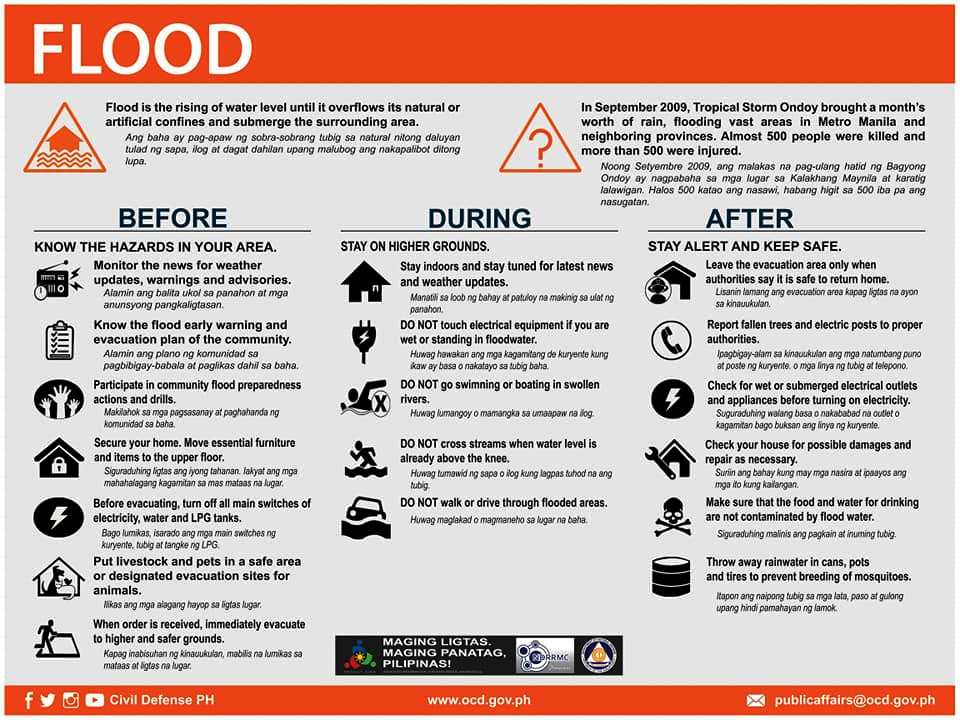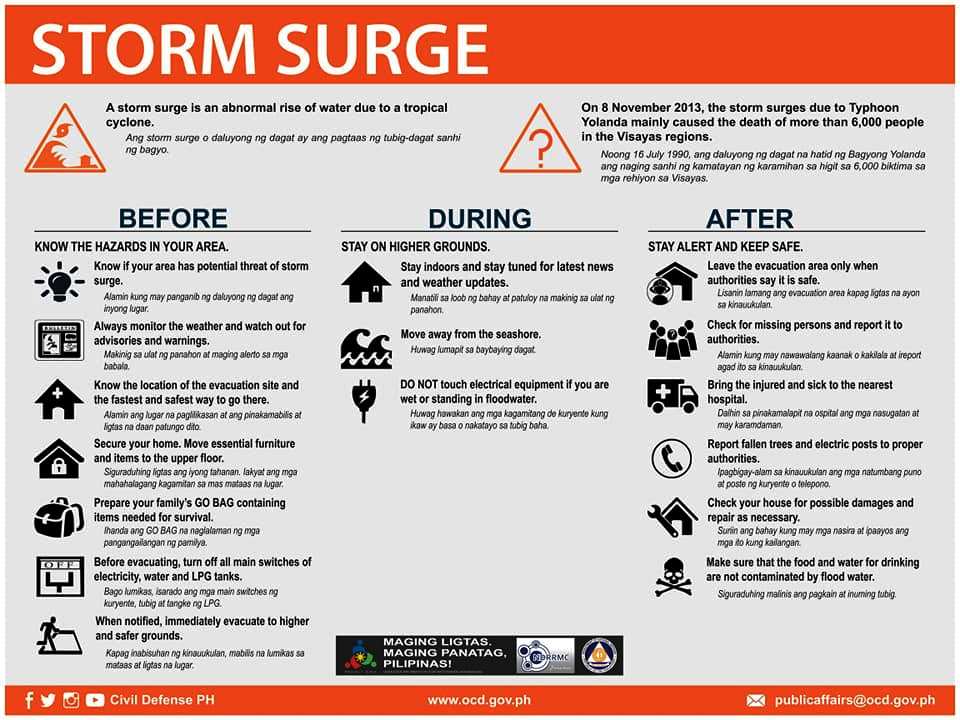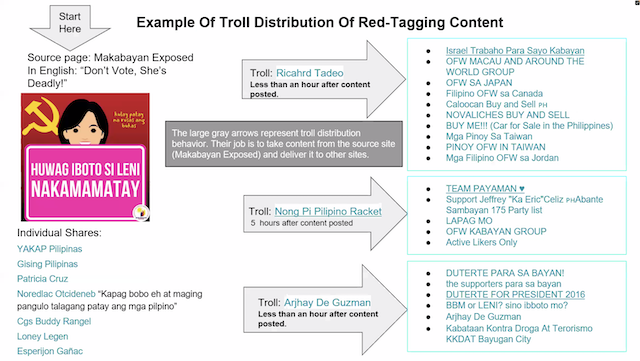Emergency Preparedness: The Go bag, Tropical Cyclone, Storm surge and Floods
I mentioned in my previous post that aside from being alert to weather bulletins, a family needs to have a preparedness plan during emergencies and a survival kit, which can just be a huge backpack or a large plastic pail with the basics that you need like food, water, medicines and packing in a transistor radio, power bank, flashlights, extra batteries, some clothes, and blankets. Preparedness begins at home and we must plan to help ourselves to minimize the impact in our household.
READ: Five ways to use social media and technology for disaster preparedness
Follow the Official Facebook account of the Philippine Atmospheric, Geophysical and Astronomical Services Administration (PAGASA-DOST)https://www.facebook.com/PAGASA.DOST.GOV.PH/ and its twitter account @dost_pagasa. Though their bulletins can be quite technical, just memorize the color-coded rainfall advisories composed of three colors: Yellow, Orange and Red. The darker the color is, the more severe it gets. Also follow Japan Meteorological Agency (JMA) and Joint Typhoon Warning Center (JTWC).
Here is an emergency preparedness plan done by the Office of Civil Defense
Prepare a GO BAG
When there is an impending danger, we need to leave our homes and evacuate to safer areas, To prepare for these emergencies, we should have a ready Go Bag that we can bring along.
Remember these three guidelines
- The Go Bag should be replenished and checked every three months
- The Go Bag should be stored properly where it can be easily accessed in case of an emergency
- Coordinate with leaders on community evacuation plan. Decide with the family on where to meet in case there is a need to evacuate
Contents of a Go Bag
The contents of the Go bag are items needed by the family to survie
- Important documents in water proof container
- Radio with fresh and extra batteries
- First aid kit remedies for fever, LBM, minor wounds and pain, and maintenance medications
- Spare cash including coins
- Items for special needs of young and older members of the family, including persons with disabilities
- Easy to serve, ready to eat food enough for three days
- Drinking water in sealed container good for three days
- Mobile phones, power banks, chargers
- Clothing, raincoat, boots and sanitary napkin
- Sleeping bags or mats, and blankets
- Ropes, old newspapers, and ecobags made of strong materials
What to do before the Tropical Cyclone
A tropical cyclone is an extreme weather condition characterized by large scale circulation of strong winds, low atmospheric pressure and heavy rains. It can cause flooding, storm surge, landslides and flash floods.
Before a tropical Cyclone
- Monitor the news for weather updates,warnings and advisories
- Know the early warning and evacuation plan of the community
- Check the integrity of your houses and repair weak parts
- Prepare your family’s GO BAG containing items needed for survival
- Put livestock and pets in safe area or designated evacuation site for animals
- When notified, immediately go to the designated evacuation center
During a tropical cyclone
- Stay calm, stay indoors and tune in to the latest news and updates
- Turn off main electrical switch and water valve
- Use flashlight and emergency lamp. Be cautious in using candles and gas lamps
- Stay away from glass windows.
After a tropical cyclone
- Wait for authorities to declare that it is safe to return home
- Stay away from damaged trees, fallen structures and power lines
- Do not go sightseeing as you may hinder the work of emergency services
- Be cautious in checking and repairing damaged parts of your houses
- Check for wet and submerged electrical outlets and appliances before turning on the electricity
- Throw away water in cans, pots and tires to prevent breeding of mosquitoes
Preparing for Flood
Flood is the rising of water level until it overflows its natural or artificial confines and submerge the surrounding areas
Before the flood
It is important to know the hazards in your area
- Monitor the news for weather updates , warnings and advisories
- Know the flood early warning and evacuation plan of the community
- Participate in community flood preparedness actions and drills
- Secure your home. Move essential furniture and items to the upper floor
- Before evacuating, turn off all main switches of electricity, water and LPG tanks
- Put livestock and pets in a safe area or designated evacuation sites for animals
- When order is received, immediately evacuate to higher and safer grounds
During the flood
Remember to stay on higher grounds
- Stay indoors and tune in to the latest news and updates
- Do not touch electrical equipment if you are wet or standing on floodwaters
- Do not go swimming or boating in swollen rivers
- Do not cross streams when water level is already above the knee
- Do not walk or drive through flooded areas
After the flood
Continue to stay alert and keep safe
- Leave the evacuation area only when authorities say it is safe to return home
- Report fallen trees and posts to proper authorities
- Check for wet or submerged electrical outlets and appliances before turning on the electricity
- Check your house for possible damages and repair as necessary
- Make sure the food and water for drinking are not contaminated by flood water
- Throw away water in cans, pots and tires to prevent breeding of mosquitoes
Storm surge
A storm surge is an abnormal rise of water due to a tropical cyclone
Here are ways you can prepare before, during and after a storm surge
Before a storm surge
Know the hazards in your area
- Know if your area has potential threat of storm surge
- Always monitor the weather and watch out for advisories and warnings
- Know the location of the evacuation site and the fastest and safest way to go there
- Secure your home. Move essential furniture and items to upper floors
- Prepare your family’s Go Bag containing items needed for surivial
- Before evacuating, turn off all main switches of electricity, water and LPG tanks
- When called, immediately evacuate to higher and safer grounds.
During a storm surge
- Stay indoors and tune in to the latest news and updates
- Do not touch electrical equipment if you are wet or standing on floodwaters
After a storm surge
- Leave the evacuation area only when authorities say it is safe
- Check for missing persons and report it to authorities
- Bring the injured to the nearest hospital
- Report fallen trees and electric posts to proper authorities
- Check your house for possible damages and repair as necessary
- Make sure the food and water for drinking are not contaminated by flood water







